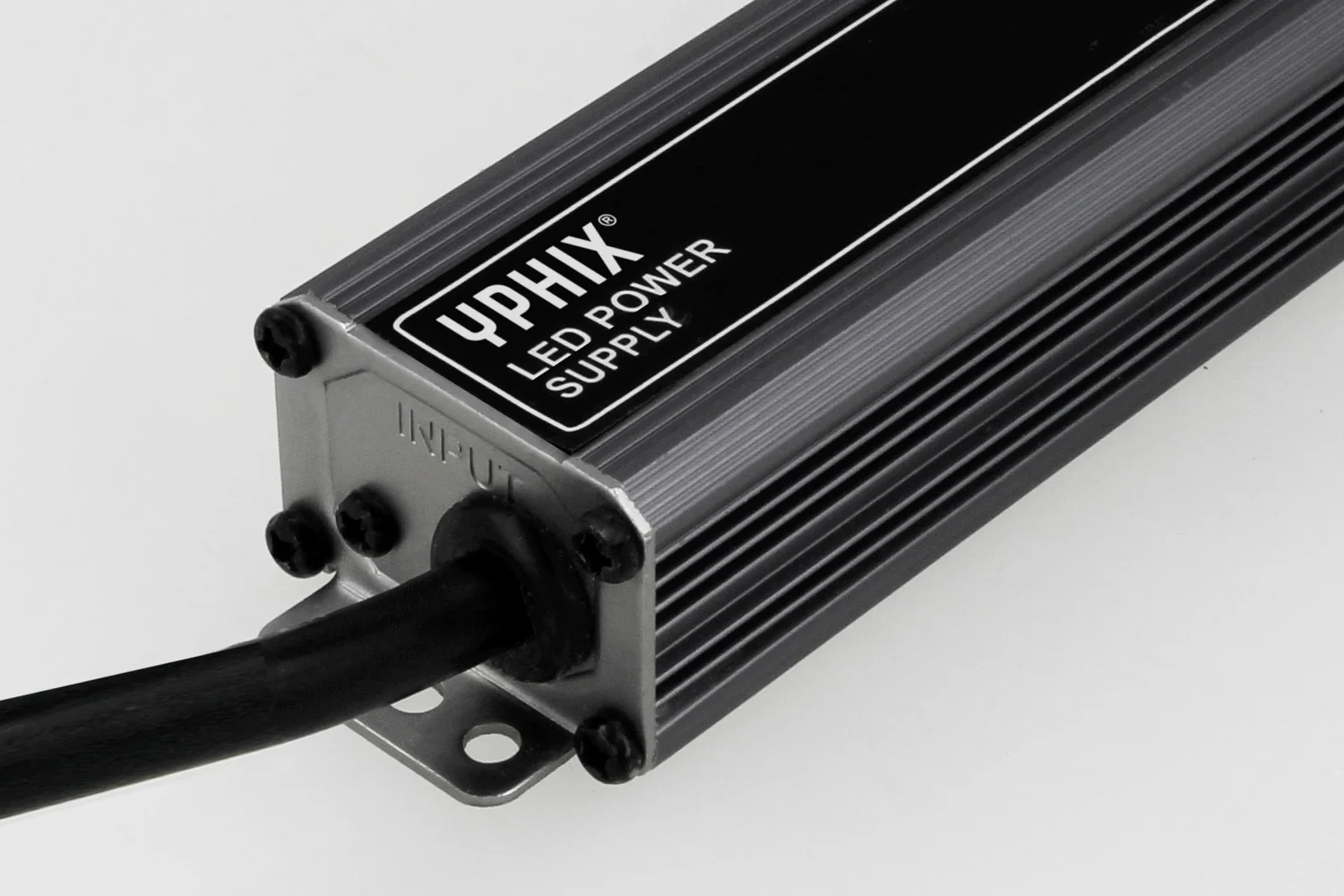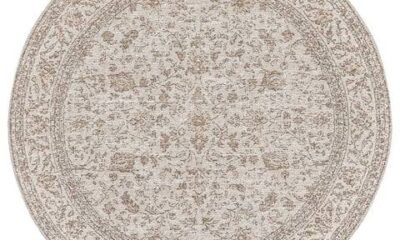Tech
Who Manufactures PCB Assembly? – A Deep Dive into the Key Players and Processes

Printed Circuit Board (PCB) assembly is at the heart of every modern electronic device. Whether it’s your smartphone, computer, or even medical equipment, PCB assembly is essential for making these devices function. But have you ever wondered who manufactures PCB assembly? What’s involved in the process? Let’s look closer at the companies and technologies behind PCB assembly manufacturing.
What Is PCB Assembly (PCBA)?
Printed Circuit Board Assembly, commonly known as PCB assembly (PCBA), is the process that transforms a bare printed circuit board (PCB) into a fully functional electronic circuit. This involves mounting and soldering electronic components such as resistors, capacitors, diodes, and integrated circuits onto a PCB to enable it to perform its intended functions. The PCBA process is fundamental to all electronic devices, ensuring the electrical pathways required for components to communicate and work together.
In the early stages of electronics, assembling a PCB was a labor-intensive process that required human precision. Nowadays, with advancements in technology, the process is highly automated, increasing both speed and accuracy while minimizing the risk of human error. However, manual soldering and inspection still play a role in specific industries, particularly in cases where specialized or sensitive components are involved.
PCB assembly follows a structured process, with critical stages that include surface mounting and through-hole mounting. Surface Mount Technology (SMT) is the most common method, where components are placed directly onto the board’s surface using specialized machinery. SMT is ideal for compact, high-density assemblies, as it allows components to be mounted on both sides of the PCB.
Through-hole technology (THT), on the other hand, involves inserting components with leads through holes in the board and soldering them on the opposite side. THT is preferred for components that need mechanical solid support, such as connectors and transformers.
The PCBA process also includes soldering, where a solder paste is applied to the board to attach the components securely. This is followed by reflow soldering, which uses heat to melt the solder and permanently bond the components to the PCB. Afterward, the assembled board undergoes testing and inspection to ensure it functions as intended. Advanced techniques such as Automated Optical Inspection (AOI) and X-ray inspection help detect potential issues early, reducing the risk of faulty boards reaching the market.
Understanding how PCB assembly works is just the beginning. Next, let’s explore the different types of manufacturers involved in the PCBA process.
Types of PCB Assembly Manufacturers
PCB assembly is vast, and not all manufacturers operate under the same model. Depending on the scale and complexity of the project, different types of PCB assembly services manufacturers are available, each catering to specific needs and industries.
- Custom PCB Manufacturers
Custom PCB manufacturers are specialists who provide tailored solutions for industries with unique or highly complex requirements. These manufacturers typically serve sectors such as aerospace, automotive, medical devices, and defense, where precision and reliability are crucial.
Since they work on smaller-scale projects with more intricate designs, they offer greater flexibility in production, allowing businesses to experiment with new designs or prototype custom products. This is particularly valuable for companies that must produce limited boards for testing or niche applications.
- Mass Production PCB Manufacturers
In contrast, mass production manufacturers focus on high-volume output, typically serving consumer electronics and automotive industries. These manufacturers are designed to handle large quantities of PCBs quickly and efficiently, relying heavily on automation to meet tight deadlines.
Mass production PCB manufacturers are best suited for businesses that need thousands or millions of PCBs for their products, such as smartphones, televisions, and other consumer goods. While they may not offer the same level of customization, their ability to deliver at scale makes them indispensable for companies with large production runs.
- Contract Electronics Manufacturers (CEMs)
Contract Electronics Manufacturers (CEMs) provide end-to-end services, making them a popular choice for businesses that want to outsource the entire PCB manufacturing process. CEMs handle everything from design and prototyping to assembly and testing. They are flexible in project size, offering services for small and large production runs.
What sets CEMs apart is their ability to manage the entire production lifecycle, which can be particularly advantageous for startups and mid-sized companies that lack the in-house expertise or infrastructure to manage PCB assembly. By partnering with a CEM, companies can focus on their core competencies while leaving the technical aspects of PCB assembly to the experts.
Now that we’ve explored the different types of PCB assembly manufacturers let’s examine some of the major players in the global market.
Top PCB Assembly Manufacturers Around the World
The global PCB assembly industry is vast. Research and Markets report that “the global PCB market size is projected to reach $86.17 billion by 2026, at a CAGR of 3.3% from 2021, driven by the increasing demand for automotive electronics, smartphones, and the ongoing rollout of 5G technology.”
Several key players are leading the charge in different regions and sectors. These companies produce the PCBs that power everything from consumer electronics to critical medical devices and aerospace technology. Below are some top PCB assembly manufacturers and PCB assembly services suppliers known for their expertise, scale, and innovation.
- Foxconn
Foxconn, a Taiwanese multinational electronics manufacturer, is arguably the biggest name in PCB assembly. Known for producing electronic devices for global giants like Apple, Foxconn handles large-scale PCB assembly for smartphones, tablets, and other consumer electronics.
With factories across the globe, including in China and the United States, Foxconn’s massive production capacity allows it to meet the high demands of the tech industry. Despite being a mass-production powerhouse, Foxconn maintains stringent quality control, ensuring each PCB functions reliably.
- Jabil
Jabil is a U.S.-based company that provides comprehensive PCB assembly services. Its expertise spans various industries, including aerospace, defense, and healthcare, where precision and reliability are paramount.
Jabil stands out for its ability to handle custom and mass-production PCB assembly, making it a versatile player in the global market. The company focuses on delivering high-quality PCBs while adhering to strict regulatory standards, particularly in industries where the slightest error could have serious consequences.
- TTM Technologies
TTM Technologies, headquartered in the U.S., specializes in producing high-end aerospace, defense, and communications PCBs. Known for handling complex, multilayer PCBs, TTM Technologies excels in projects that require high precision and advanced engineering capabilities. TTM’s strong engineering teams work closely with clients to ensure that each PCB design meets the specifications needed for critical applications.
- Flex Ltd.
Flex Ltd., formerly Flextronics, is a global manufacturer known for flexibility and innovation. Flex serves various industries, including automotive, consumer electronics, and healthcare, by providing mass production and custom solutions. The company emphasizes sustainable manufacturing practices, making it a leader in environmentally conscious PCB assembly. Flex’s ability to adapt to various industries while maintaining high production quality makes it a top choice for businesses worldwide.
Having explored some of the top manufacturers, it’s time to break down the detailed steps involved in PCB assembly from start to finish.
The PCB Assembly Process: From Concept to Completion
PCB assembly is a complex, multi-stage process that transforms a blank PCB into a fully functioning circuit board. Whether for a prototype or a mass-produced product, the steps involved in PCB assembly require precision, efficiency, and careful attention to detail.
- Design and Prototyping
The design and prototyping stage is crucial before the actual assembly begins. Manufacturers work closely with clients to develop the PCB layout based on the product’s technical requirements. The design phase involves creating detailed schematics and ensuring the placement of each component on the board is optimized for performance.
Prototyping allows the manufacturer to develop an initial sample of the PCB, which can be tested for functionality and design flaws. This stage is vital for identifying any potential issues before full-scale production begins.
- Component Sourcing
Once the design is finalized, manufacturers source the necessary electronic components for the assembly. Component sourcing is an essential step, as the quality of the components directly affects the reliability and performance of the final product.
Manufacturers often rely on a network of trusted suppliers to obtain components like resistors, capacitors, ICs, and connectors. Timely sourcing is critical to keeping production schedules on track, particularly for large-scale manufacturing projects.
- Surface Mount Technology (SMT)
SMT is the backbone of modern PCB assembly. In this step, components are mounted directly onto the surface of the PCB using automated machines. A solder paste is applied to the board, and pick-and-place machines position each component with high precision.
Once the components are in place, the board passes through a reflow oven, where heat is applied to melt the solder paste and secure the components in place. SMT is the most efficient method for assembling high-density PCBs, making it ideal for compact devices like smartphones and wearables.
- Soldering and Inspection
After the SMT process, the PCB is inspected to ensure all components are correctly placed and securely soldered. This step includes visual inspections and advanced techniques like Automated Optical Inspection (AOI) and X-ray scanning.
These systems can detect any soldering defects or misplaced components. If any issues are found, the board is sent back for rework. Manual soldering may still be required for through-hole components, particularly for connectors and other components that cannot be surface-mounted.
- Testing and Quality Assurance
The final stage of PCB assembly involves rigorous testing to ensure the board functions as intended. Electrical tests check for shorts, open circuits, and signal integrity. Functional testing ensures the board can perform its designated tasks without errors. Quality assurance teams conduct additional inspections to ensure the product meets all industry standards and client specifications before it’s packaged and shipped.
Innovations in PCB Assembly Technology
PCB assembly continues to evolve rapidly. According to Statista, the global PCB market was valued at approximately $63.5 billion in 2021 and is expected to grow significantly due to increasing demand for electronic devices across various sectors, including automotive, healthcare, and consumer electronics, and driven by consumer demands for faster, smaller, and more efficient electronics. As a result, manufacturers are adopting cutting-edge technologies and methods to remain competitive and meet the growing needs of industries like telecommunications, medical devices, and consumer electronics. Let’s explore some key innovations that are reshaping PCB assembly.
- Automation and Artificial Intelligence (AI)
Automation has revolutionized the PCB assembly process, speeding up production while reducing human error. Modern PCB assembly lines utilize robotic arms and machines to handle intricate components and complex designs with high precision.
AI is taking automation further by integrating machine learning into these processes. AI-powered machines can learn from production data to optimize placement accuracy and minimize defects. This innovation has reduced production times and improved quality, particularly for complex, multilayer boards used in advanced electronics.
- Advanced Materials and Eco-Friendly Solutions
As the world moves towards sustainability, PCB manufacturers are not far behind. One of the most significant innovations is using advanced materials such as flexible substrates, which allow PCBs to be designed in compact, lightweight forms.
These flexible PCBs are ideal for modern devices like smartphones, wearable tech, and medical implants that require compact, bendable designs. Alongside flexible materials, manufacturers are exploring biodegradable PCBs made from eco-friendly compounds, making electronics more sustainable. This shift toward greener solutions is essential as companies worldwide strive to reduce electronic waste.
- Miniaturization and Enhanced Efficiency
Miniaturization is a vital trend in the race to build smaller and more powerful devices. Micro-PCBs are now used in IoT devices, drones, and advanced medical devices, packing more components into smaller spaces without sacrificing performance.
trend of shrinking electronics, driven by consumer demands for portability and convenience, pushes PCB manufacturers to refine assembly techniques further. Combining high component density with efficiency improvements ensures manufacturers can meet the requirements of next-gen electronics without increasing production costs.
While these innovations drive PCB assembly forward, choosing the right partner is just as important. Let’s explore critical factors in selecting a PCB assembly manufacturer.
Key Factors in Choosing a PCB Assembly Manufacturer
Choosing the proper PCB assembly manufacturer is not just about finding someone to produce your designs. It’s about finding a partner that understands your specific needs and can ensure quality, reliability, and scalability. Here are the most critical factors when selecting a PCB assembly supplier.
- Experience and Industry Expertise
One of the first things to consider is the manufacturer’s experience. PCB assembly requires a deep understanding of various industries, such as aerospace, medical devices, automotive, and telecommunications. Each industry has its own set of requirements, and an experienced manufacturer can guide you through design optimization, component selection, and compliance with industry standards. Their knowledge can help you avoid common pitfalls, such as design errors or delays in the production process.
- Certifications and Quality Standards
Ensuring quality is paramount when choosing a PCB assembly supplier. Manufacturers should adhere to internationally recognized quality standards like ISO 9001 or IPC-A-610. These certifications guarantee that the manufacturer follows strict guidelines and practices during production. Additionally, RoHS compliance is essential for environmental sustainability, particularly for companies concerned with hazardous materials in electronics. Working with a certified manufacturer can give you peace of mind that your products will be safe, reliable, and compliant with industry regulations.
- Scalability and Production Capacity
Whether starting with a small prototype or planning to scale into mass production, choosing a manufacturer who can grow with your needs is essential. A good partner should be able to handle everything from low-volume prototype runs to large-scale production without compromising on quality. Scalability is critical for businesses anticipating growth, as it saves time and effort that would otherwise be spent switching manufacturers as your production volume increases. Ensure the PCB assembly house has the equipment, workforce, and logistical capacity to meet your short-term and long-term goals.
Now that you know what to look for in a PCB assembly partner, it’s time to consider the future. Today’s trends shaping the PCB industry will be critical to your approach to your next project.
Future Trends in PCB Assembly Manufacturing
The PCB assembly industry is continuously evolving, and keeping an eye on future trends can give you a competitive edge. These trends shape how PCBs are manufactured and influence how industries like electronics, healthcare, and automotive operate. Grand View Research highlights that the global PCB market is projected to grow at a compound annual growth rate (CAGR) of 5.3% from 2022 to 2030, driven by technological innovations such as AI and 5G, which require more sophisticated PCB assemblies.
Let’s examine some key trends that will dominate the PCB assembly market in the coming years.
- Industry 4.0 and Smart Manufacturing
Industry 4.0, which refers to the current automation and data exchange trend in manufacturing technologies, is transforming PCB assembly. Smart factories equipped with sensors, IoT devices, and AI-driven automation allow PCB manufacturers to enhance productivity and efficiency.
This move towards data-driven processes enables real-time monitoring of production lines, predictive maintenance, and more informed decision-making. In intelligent manufacturing environments, machine-to-machine communication allows for greater flexibility in adapting to changes, reducing downtime, and optimizing assembly lines.
- On-Demand Manufacturing and Customization
With consumer demands for personalized electronics on the rise, PCB manufacturers are increasingly adopting on-demand manufacturing practices. Using advanced technologies like 3D printing and digital manufacturing, manufacturers can now offer rapid prototyping and customization for smaller production runs.
This is particularly valuable for startups and innovators who require custom solutions but don’t have the budget or need for mass production. On-demand PCB assembly services provide flexibility and faster turnaround times, which is crucial for companies looking to get their products to market quickly.
- Global Supply Chain Adaptations
The COVID-19 pandemic has exposed vulnerabilities in global supply chains, and the PCB assembly industry has not been immune. As companies faced component shortages and shipping delays, manufacturers have adapted by reshoring production or diversifying their supply chains. We expect to see more localized production hubs, particularly in regions with solid technology sectors. This shift toward shorter, more resilient supply chains ensures that manufacturers can meet demand despite global disruptions. Additionally, companies are investing in better inventory management systems to avoid disruptions caused by shortages.
As these trends continue to shape the future of PCB assembly manufacturing, staying informed will help you make the best decisions for your projects and business.
How PCB Assembly Powers Various Industries
PCB assembly is vital across numerous sectors, providing the precision, efficiency, and versatility needed to drive technological innovation. From the devices we use daily to critical systems in healthcare and defense, PCBs are the backbone of modern technology.
- Consumer Electronics
Consumer electronics is one of the most visible sectors that are reliant on PCB assembly. Devices like smartphones, tablets, and gaming consoles depend on the intricate circuits that PCBs provide. Consumers demand faster, smaller, and more powerful devices, so manufacturers like Foxconn and Flex Ltd. work tirelessly to produce miniaturized PCBs with enhanced designs. These innovations meet the need for high performance in compact products.
- Automotive Industry
In the automotive industry, the rise of electric vehicles (EVs) and advanced driver-assistance systems (ADAS) has revolutionized the role of PCBs. PCBs are used in everything from engine control units to in-car entertainment systems, supporting modern vehicles’ numerous sensors and electronic components. Manufacturers like TTM Technologies and Jabil produce PCBs that meet this fast-evolving sector’s stringent quality and safety standards.
- Aerospace and Defense
The aerospace and defense sectors rely on PCBs, from military drones to satellite systems, for critical applications. These industries demand flawless performance under extreme conditions, requiring highly specialized PCBs that are durable, reliable, and resistant to harsh environments. Custom PCB manufacturers provide tailored solutions to meet these high-stakes needs, where performance and quality are crucial to national security.
- Healthcare and Medical Devices
Medical devices such as pacemakers, MRI machines, and ventilators depend heavily on PCBs to function effectively. Precision and reliability are paramount in healthcare, as any failure could have life-threatening consequences. The trend towards miniaturization is especially relevant here, with wearable medical devices requiring compact, dependable PCBs to deliver optimal patient care.
- Telecommunications
Telecommunications relies on flex pcb for everything from cell towers to mobile devices. As 5G technology rolls out globally, there is an increasing demand for PCBs that can handle high-frequency signals and ensure stable communication. The need for advanced PCB assembly solutions will grow as this sector expands.
The Backbone of Modern Technology
Finding the right PCB assembly services supplier is more than just ticking boxes on a checklist—it’s about building a partnership that supports your vision. A dependable PCB assembly manufacturer ensures your designs translate seamlessly into functional, high-quality products. With the right PCB assembly supplier, you’ll avoid production headaches and missed deadlines, allowing more time to innovate.
Whether it’s quick turnarounds or custom solutions, a reliable PCB assembly factory will understand your unique challenges and deliver on time. Ready to elevate your next project? Connect with the right supplier and watch your electronics soar.
Tech
Best AI Image Editor with Prompt-Free Features of 2025

Creating high-quality digital visuals has become essential for creators, marketers, designers, and everyday users. In 2025, the demand for an AI image editor with prompt-free workflows is skyrocketing—people want instant, intuitive edits without typing complicated instructions. From Face Swap AI to object removal, lighting enhancement, and total image redesigns, today’s tools are more powerful, accessible, and user-friendly than ever.
To help you choose the right platform, we compiled the Best AI Image Editors with Prompt-Free Features of 2025, analyzing speed, accuracy, usability, features, pricing, and output quality.
And yes—Magic Hour takes the top spot thanks to its unmatched performance, intuitive controls, and creator-friendly pricing.
At a Glance: Best AI Image Editors with Prompt-Free Tools (2025)
- #1 Magic Hour – Best overall AI image editor with prompt free tools
- #2 Canva AI – Best for social creators & quick visual design
- #3 Adobe Firefly – Best for professionals needing precision
- #4 FotorAI – Best for fast one-click enhancements
- #5 PicsArt AI – Best mobile-friendly AI image editing suite
- #6 FaceApp/Face Swap AI Tools – Best for face-swapping and transformations
1. Magic Hour – Best AI Image Editor with Prompt-Free Features (Winner)
magichour.ai
When it comes to AI photo editing without complex prompts, Magic Hour delivers the most intuitive and powerful experience available in 2025. Whether you’re adjusting lighting, enhancing faces, performing Face Swap AI transformations, or editing visuals for social media, Magic Hour provides nearly instantaneous results—no typing required.
Why Magic Hour is #1
Magic Hour combines speed, quality, and simplicity, making advanced AI editing accessible to everyone. The interface is beginner-friendly yet powerful enough for professional editors, marketers, filmmakers, and content creators.
Standout Features
- Zero-prompt AI editing (fully visual UI)
- Advanced face enhancements & Face Swap AI
- Realistic lighting and color re-touching
- Auto-remove backgrounds, objects, and imperfections
- AI presets designed for creators, marketers & video editors
- Perfect for both images and video workflows
Magic Hour Pricing (Accurate 2025 Pricing)
- Free Plan: Essential features at no cost
- Creator Plan: $15/month (monthly) or $12/month (annual)
- Pro Plan: $49/month
These plans make Magic Hour one of the most competitively priced high-end AI editing tools.
2. Canva AI
Canva’s AI image editor is excellent for beginners and social media creators. Its prompt-free UI lets you drag-and-drop enhancements, auto-restore images, and build designs instantly.
Key Features
- One-click enhancements
- AI background generator
- Magic Eraser object removal
- Perfect for Instagram, TikTok, and brand graphics
3. Adobe Firefly
Adobe Firefly is ideal for creative professionals needing precision. Although it includes prompt-based features, many of its top tools—like expand, recolor, and object removal—are prompt-free.
Key Features
- Advanced retouching
- High-resolution outputs
- Photoshop-integrated AI
4. FotorAI
FotorAI offers one-click image enhancement perfect for users who need quick, simple edits without learning complex software.
Key Features
- Prompt-free editing
- Beauty retouching
- High-quality filters
5. PicsArt AI
PicsArt excels in mobile AI editing with a large suite of creative, prompt-free tools.
Key Features
- Face swap, filters, effects
- Background removal
- Easy mobile workflow
6. Face Swap AI Tools
Face Swap AI tools continue dominating TikTok and YouTube content creation. These tools allow instant face swaps, celebrity transformations, and character remixes—perfect for creators who want maximum engagement.
How We Chose These Tools
To ensure this list truly reflects the best AI image editor with prompt-free workflows, we evaluated each tool using:
1. Prompt-Free Editing Quality
We tested each platform to see how easily users can edit photos without typing instructions.
2. Speed & Processing Power
Fast rendering and high-quality output were essential criteria.
3. Pricing & Value
Tools offering flexible, transparent pricing ranked higher. Magic Hour’s Free, Creator, and Pro pricing is one of the most creator-friendly setups in the 2025 landscape.
4. Features & Versatility
We prioritized tools offering Face Swap AI, object removal, background editing, relighting, and enhancement tools.
5. Usability & Design
Interfaces that allowed beginners to create advanced edits scored highly.
6. Real-World Performance
We tested outputs across marketing visuals, social media graphics, portraits, product photos, and cinematic content.
Market Trends: AI Image Editing in 2025
The AI editing space is evolving fast. Here are the biggest market trends shaping 2025:
1. Prompt-Free Editing is Taking Over
Users no longer want to type complicated prompts. Visual editing interfaces are becoming the standard—and Magic Hour is leading the trend.
2. Explosion of Face Swap AI
Face Swap AI is dominating social content, short-form video, filters, and meme culture.
3. Cross-Platform Editing (Image + Video)
Tools are merging photo and video editing into one AI-powered workflow.
4. Creator-Focused Pricing Models
More platforms offer low-cost monthly plans to support freelancers and small creators.
5. Ultra-Realistic Outputs
AI-generated visuals are now nearly indistinguishable from real photography.
Final Thoughts
If you’re searching for the best AI image editor with prompt-free tools, 2025 offers many great options—but Magic Hour stands out as the leading choice. Its unmatched ease of use, creator-focused features, stunning output quality, and fair pricing make it perfect for modern digital creators.
Whether you’re enhancing portraits, editing product photos, swapping faces, or generating social-media-ready images, Magic Hour gives you professional-level results without the complexity.
FAQs
1. What is an AI image editor with prompt-free features?
It’s a tool that lets you edit images using visual controls instead of typing text prompts.
2. Is Magic Hour really free?
Yes—Magic Hour offers a Free Plan, plus affordable Creator and Pro upgrades.
3. Which tool is best for Face Swap AI?
Magic Hour, PicsArt, and FaceApp-style tools all perform well, but Magic Hour provides the best blend of realism and ease.
4. Are prompt-free editors better than prompt-based tools?
For most users, yes—because they’re faster, easier, and require no learning curve.
5. Which AI image editor is best for beginners?
Magic Hour and Canva AI are the most beginner-friendly options in 2025.
YOU MAY ALSO LIKE: Best AI Headshot Generator: The Ultimate Guide to AI Photo Editors
Tech
The Growing Importance of Reliable LED Power Supply Suppliers in the Global Lighting Industry

In recent years, LED lighting has revolutionized the way we illuminate our homes, offices, streets, and industrial facilities. With its high efficiency, long lifespan, and environmental benefits, LED technology has rapidly replaced traditional lighting sources such as incandescent and fluorescent lamps. However, one of the most critical yet often overlooked components in LED lighting systems is the LED power supply. As demand for LEDs continues to grow worldwide, the role of LED power supply suppliers has become increasingly important for ensuring quality, reliability, and innovation in the lighting industry.
An LED power supply, also known as an LED driver, is responsible for converting the incoming electrical current into a stable and suitable form that powers the LEDs. Since LEDs require specific current and voltage conditions to operate efficiently, the power supply plays a vital role in determining the performance, safety, and lifespan of the lighting system. A well-designed LED power supply ensures consistent brightness, prevents flickering, and protects against power surges or overheating. Therefore, choosing the right LED power supply and working with reliable suppliers are essential steps for any lighting manufacturer or project integrator.
The Role of LED Power Supply Suppliers in Quality Assurance
High-quality LED lighting products depend heavily on the capabilities and expertise of their suppliers. Leading LED power supply suppliers not only provide stable and energy-efficient products but also ensure compliance with international standards such as CE, UL, RoHS, and FCC. These certifications demonstrate that their power supplies meet safety, environmental, and performance requirements. Moreover, reputable suppliers typically have robust quality control systems and testing facilities to ensure that each unit performs consistently under different environmental conditions.
In today’s competitive market, LED power supply suppliers also play an essential role in helping manufacturers achieve cost efficiency. Through innovation and economies of scale, they can reduce the cost per unit while maintaining product quality. This enables lighting brands to offer affordable yet high-performance solutions to consumers and businesses. Furthermore, suppliers often work closely with their clients to customize solutions for specific applications, such as architectural lighting, industrial lighting, horticultural lighting, or smart city infrastructure.
Innovation and Technology Development
Innovation is a key differentiator among LED power supply suppliers. With rapid advancements in smart technology, the demand for intelligent power supplies has surged. Modern LED drivers now often include features such as dimming capability, remote monitoring, wireless control, and integration with Internet of Things (IoT) systems. These advanced features allow users to control brightness, color temperature, and energy consumption through mobile apps or centralized control platforms, offering both convenience and energy efficiency.
Leading suppliers are investing heavily in research and development to create more compact, efficient, and eco-friendly power supply solutions. The focus is shifting toward achieving higher energy conversion rates, improved thermal management, and longer lifespans. In addition, as governments and organizations emphasize sustainable development, suppliers are developing products that support renewable energy systems, such as solar-powered LED lighting.
Global Supply Chain and Market Trends
The global LED power supply market is highly competitive and dynamic. Suppliers from countries such as China, Taiwan, South Korea, Germany, and the United States dominate the industry, each contributing unique strengths. Chinese LED power supply suppliers, for instance, have gained a significant share of the global market due to their cost-effective manufacturing capabilities and rapid product innovation. Many international lighting brands source their drivers from China because of the country’s well-established electronics supply chain.
However, as global demand continues to rise, challenges such as raw material shortages, fluctuating energy costs, and international trade policies can impact supply chain stability. To address these issues, many suppliers are adopting more resilient business models, such as establishing regional production centers, diversifying their supplier base, and using advanced logistics technologies. These strategies help ensure timely delivery, consistent quality, and cost control for their global customers.
Selecting the Right LED Power Supply Supplier
When selecting a supplier, lighting manufacturers and distributors must consider several key factors. First, product reliability and certification are essential to ensure compliance with safety and performance standards. Second, technical support and after-sales service play a significant role, especially for large-scale lighting projects. A responsive supplier can help troubleshoot issues, provide design recommendations, and offer firmware updates for smart drivers. Third, customization capabilities are increasingly important, as different lighting applications require unique voltage, current, and control specifications.
Furthermore, sustainability is becoming a core selection criterion. Many companies now prioritize suppliers who adhere to green manufacturing practices, use recyclable materials, and minimize waste in production. This alignment with environmental values not only enhances brand reputation but also supports global sustainability goals.
The Future of LED Power Supply Suppliers
Looking ahead, the role of LED power supply suppliers will continue to expand as lighting technology evolves. The integration of artificial intelligence (AI), IoT, and advanced energy management systems will require more sophisticated power solutions. Suppliers who can adapt to these trends and offer smart, efficient, and eco-friendly products will gain a competitive advantage in the global market.
Additionally, as renewable energy and electric mobility continue to grow, LED power supply technologies may find new applications beyond lighting — such as in charging systems, energy storage, and smart grid solutions. This diversification offers exciting opportunities for both established and emerging suppliers in the industry.
Conclusion
In conclusion, LED power supply suppliers are at the heart of the rapidly evolving LED lighting ecosystem. Their products directly influence the efficiency, safety, and intelligence of lighting systems across residential, commercial, and industrial sectors. By providing reliable, innovative, and sustainable solutions, these suppliers not only support the growth of the LED industry but also contribute to a more energy-efficient and environmentally friendly world. As the global market continues to expand, collaboration between manufacturers, designers, and LED power supply suppliers will remain essential for driving the next generation of lighting innovation.
Tech
6 Myths About Solar Energy Debunked

In recent years, the popularity of solar energy has skyrocketed as more homeowners recognize its potential benefits. Despite this increase in interest, many people are still held back by incorrect beliefs about solar energy.
Let’s explore six common myths surrounding this renewable energy source and the facts that debunk them in this solar installation guide.
1. Solar Energy is Too Expensive
One of the most widespread misconceptions about solar energy is that it is prohibitively expensive. While the initial investment for a solar power system can be significant, various financing options are available.
Many states also offer tax credits, rebates, and incentives that can greatly reduce costs. In fact, the long-term solar energy savings makes it one of the most energy-efficient solutions for homeowners!
2. Solar Panels Don’t Work in Cloudy Weather
Another prevalent myth is that solar panels aren’t effective unless it’s sunny all the time. While it’s true that solar panels are most efficient during direct sunlight, they can still generate energy on cloudy or rainy days.
In fact, most modern solar panels are designed to capture even diffused sunlight effectively.
3. Solar Energy Requires Too Much Maintenance
Many people think that once they install a solar power system, maintenance will be a headache. On the contrary, they are relatively low-maintenance.
Regular cleaning and occasional inspections are usually all that’s needed. Most manufacturers also provide warranties to cover any potential issues.
4. Installing Solar Panels Will Ruin Your Roof
Some homeowners fear that installing solar panels will damage their roofs. In reality, reputable solar installers know how to effectively mount panels without compromising the integrity of your roof.
Proper installation can actually improve your roof’s lifespan by protecting it from elements like UV rays and rain.
5. Solar Energy is Not Available Everywhere
While it’s true that solar energy is more effective in certain geographic locations, it is available almost everywhere. Cities and towns across the country, even in less sunny regions, are utilizing solar energy.
Innovative technology ensures that solar panels can efficiently generate power regardless of the climate. When in doubt, consult a renewable energy expert for region-specific advice.
6. Solar Panel is the Only Available Solar Energy Solution
Many people assume that solar panels are the only effective way to lower energy bills, but that isn’t true. Daylight solutions like Solatube can capture natural sunlight and channel it into interior spaces, reducing the need for artificial lighting during the day.
Visit https://thesolarguys.com/ to find out how to get started!
Don’t Let Myths Hinder Your Solar Journey!
Understanding the facts behind solar energy can empower homeowners to make informed decisions. By debunking these five myths, we can foster a clearer understanding of how solar energy can benefit us all. If you’re considering a shift to solar, take the leap and explore the options available to you!
As you plan your transition to renewable energy, consider working with experienced professionals who can guide you through the process. Don’t let misconceptions hold you back from harnessing the power of the sun.
Looking for more home improvement advice? Dive into our other blog posts for expert tips and inspiration!
READ ALSO: How to Maximise Energy with Solar Panel Cleaning Services
-

 Education11 months ago
Education11 months agoMastering Excel: Your Comprehensive Guide To Spreadsheets And Data Analysis
-

 Tech1 year ago
Tech1 year agoHow To Choose The Best Forex Trading Broker?
-

 Business1 year ago
Business1 year agoExploring the Rental Market: Properties for Rent in Malta
-

 Blog11 months ago
Blog11 months agoArab MMA Fighters Shine Bright: Meet the Champions of PFL MENA
-

 Travel1 year ago
Travel1 year agoExperience the Best Desert Safari Dubai Offers!
-

 How-To Guides2 years ago
How-To Guides2 years agoComprehensive Guide to Cockwarming: Enhancing Intimacy and Connection
-

 Home Improvement2 years ago
Home Improvement2 years agoEco-Friendly Round Rug Options for Sustainable Living in NZ
-

 Apps and Games2 years ago
Apps and Games2 years agoDiscover Tickzoo: The Ultimate Platform for Video Content Lovers and Creators
